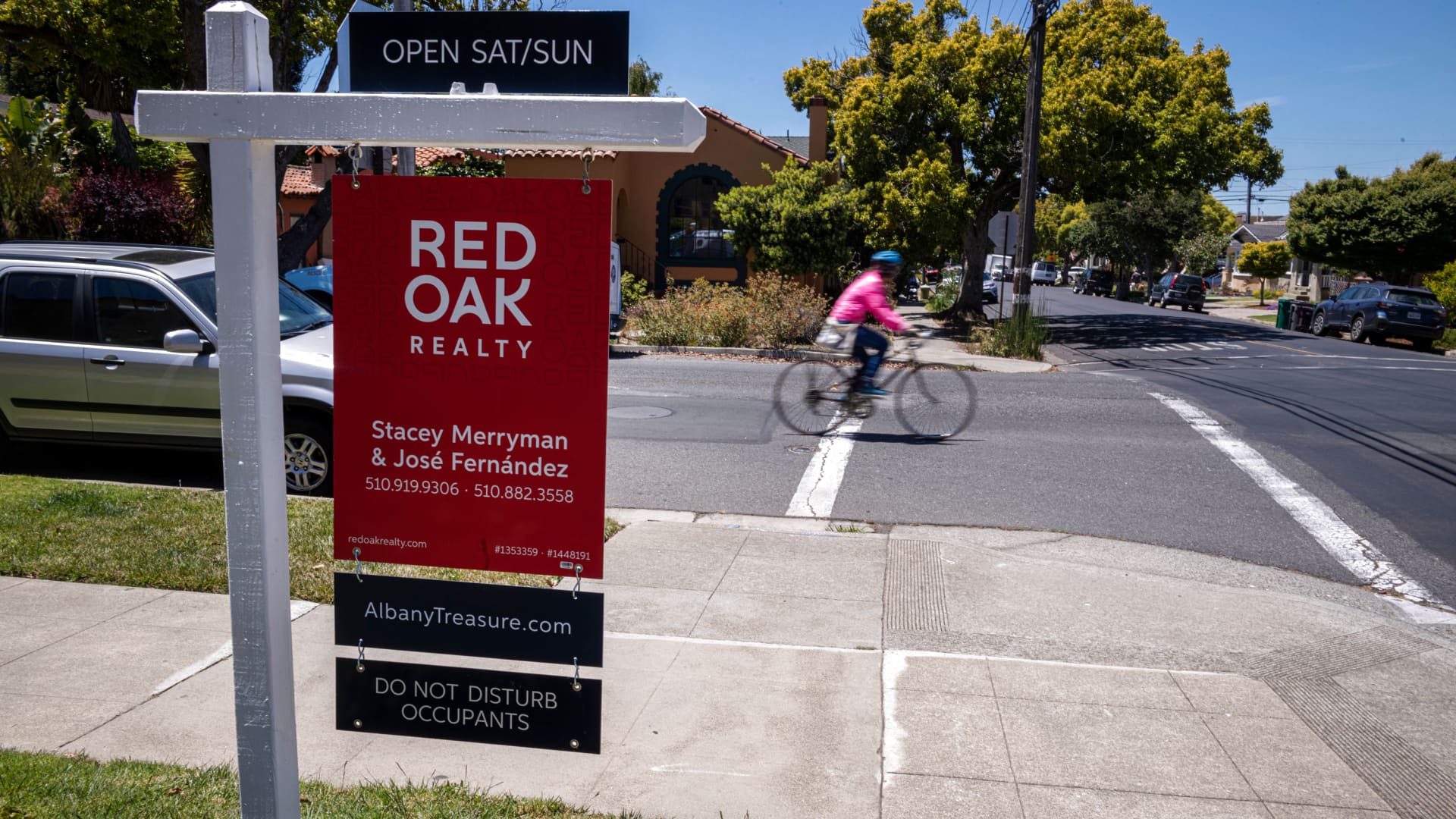After a stronger start to the year, mortgage demand plunged last week, despite another drop in interest rates.
Total mortgage application volume fell 9% last week compared with the previous week, according to the Mortgage Bankers Association’s seasonally adjusted index.
The average contract interest rate for 30-year fixed-rate mortgages with conforming loan balances ($726,200 or less) decreased to 6.19% from 6.20%, with points falling to 0.65 from 0.69 (including the origination fee) for loans with a 20% down payment. The rate was 3.78% the same week one year ago.
Even with rates well off their recent highs, applications to refinance a home loan fell 7% for the week and were 80% lower than the same week one year ago. Homeowners may have jumped back briefly after the holiday lull, causing demand to rise over much of January, but overall there are still very few borrowers who can benefit from a refinance at today’s rates, so demand is now falling again.
Mortgage applications to buy a home fell 10% for the week and were 41% lower year over year. While both home prices and mortgage rates are coming down steadily, the supply of homes for sale is still quite low, and that may be keeping mortgage demand under pressure.
“Purchase activity is expected to pick up as the spring homebuying season gets underway, bolstered by lower rates and moderating home-price growth,” said Joel Kan, an MBA economist. “Both trends will help some buyers regain purchasing power.”
Mortgage rates have been moving in a narrow range for the last few days, but that could all change depending on commentary expected from the chairman of the Federal Reserve on Wednesday. The central bank is expected to hike its interest rate, but that doesn’t necessarily raise mortgage rates. The monthly employment report Friday could also move rates decidedly, depending on what it says about the state of the economy, recession and inflation.
“There are also several important economic reports that could lead traders to revise their assessment of the Fed’s likely course of action,” noted Matthew Graham, chief operating officer at Mortgage News Daily. “In other words, even after the Fed-induced volatility, traders could find new reasons to buy/sell bonds at an even faster pace, thus causing bigger movement in rates for better or worse.”
